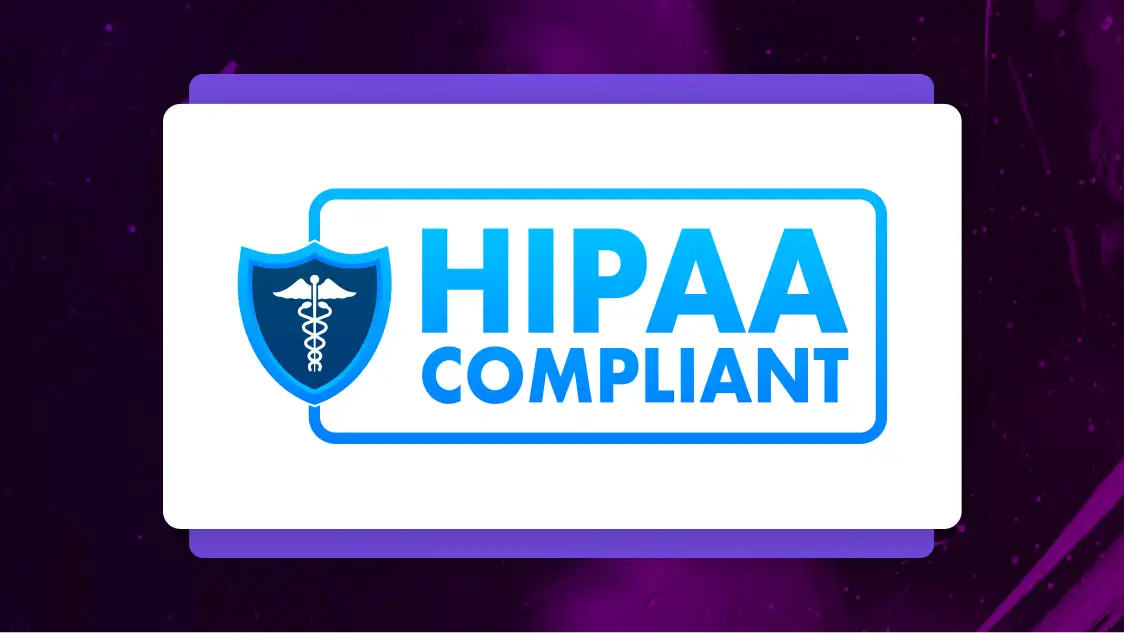Expert Insight to Boost Workplace Productivity
Looking for tips to increase workplace productivity? We rounded up some must-know strategies to add to your routine to make everyday count.

You might have noticed that over the years there has been an increased focus on workplace wellness and work-life balance. In fact, employees’ tendency to burn out and stop overachieving at work was even dubbed quiet quitting, as more employees decided to focus on their physical and mental health at work instead of working overtime to meet goals.
So how can employers and employees both focus on wellness while making sure company goals are met and customers are happy? By focusing on workplace efficiency and productivity. Upping workplace productivity can make sure your employees are still able to unwind after work without becoming too stressed, and that their working hours aren’t wasted.
And in a world where almost 90% of workers admit they tend to waste time at work, implementing workplace productivity strategies is more important than ever. Let’s look at some top workplace productivity insights, and tips for upping your efficiency.
What Is Productivity in the Workplace?
Productivity in the workplace is a measure of output or performance over a period of time. Your workplace may measure productivity by total company output, team output, or individual output. Essentially, it’s a metric that benchmarks employee productivity against the goals of the company to see how performance can be improved.
The Benefits of Focusing on Productivity
Focusing on increasing productivity in the workplace can help you meet your goals without stressing yourself out. By being smart with how you schedule your day, you can make sure that you optimize your workflow so you don’t have to work overtime and don’t risk burning out.
For employees, focusing on productivity can:
- Help you complete your work without becoming burnt out
- Increase the quality of your work
- Improve your workplace happiness
- Boost your confidence at work
Employers wondering how to drive employee performance may not need to crack down on the rules or create unrealistic timelines. Focusing on creating a lucrative workplace for productivity can help your employees not only be happier, but can also encourage them to do higher-quality work.
A few company-wide benefits of focusing on productivity include:
- Increased employee wellbeing and retention
- Increased profits as more work gets done
- Better customer service and ability to meet the demands of the customer
- Happier employees creating a more positive workplace culture
- More creativity and flow of ideas as employees are empowered to problem solve
7 Workplace Productivity Strategies and Tips
There have been many tips, tricks, and fads throughout the years that promise to help you more effectively work. But not all of them are actually helpful. Below, we’ve rounded up six productivity tips that we think are the real deal.
1. Keep Track of Your Most Productive Hours
“Early bird,” “night owl” — there are a few different terms for people who are the most energized at different times of the day. And while doing work at 11 p.m. isn’t realistic (or recommended), you can incorporate the times of day that you’re the most productive into your routine. The bulk of workers — almost 40%! — say they’re most productive right when they log on, from 9 to 11 a.m.
How to Do It: Make note if you’re the most energized right when you log onto your computer, just before lunch, or while you’re winding down your day. Then, save your most crucial tasks for those hours.
2. Integrate AI Into Your Workplace
Artificial intelligence can be used for pretty much anything at this point, so it can be a valuable tool to help you knock out some tasks while you focus on the bigger picture. You can use AI to make your daily schedule, brainstorm ideas for later, come up with content ideas, and even automate your workflow.
Tip: For those working with content, AI can help you transcribe interviews, summarize transcriptions, and more. Sign up for Rev’s VoiceHub to see how artificial intelligence can be a boon to your workplace.
3. Turn On Do Not Disturb
It’s hard to ignore the ding of a notification, the allure of trending news on X, or the temptation to see what your friends posted over the weekend on a Monday morning. The best way to ignore distractions? Turn them off! Put your phone, computer, or other devices on Do Not Disturb mode, so you won’t be tempted to check your notifications at work.
Tip: Many devices let you select a few people whose notifications will go through even when you have Do Not Disturb mode turned on, so you can still make sure you receive important messages from family.
4. Practice Task Batching
Did you know that only 12% of workers are able to devote more than six hours per day to their work tasks? So it’s a good practice to make sure those hours are spent getting the essentials done. One way to do this is by task batching, or a productivity technique where you group similar tasks together and knock them out all at once. This can help you get your brain in the right mindset to complete each specific type of work.
How to Do It: At the beginning of each week, look at your to-dos and group them together by type. Then, add the batches into your calendar, making sure to position them around existing meetings, appointments, etc.
5. Up the Energy In Your Workspace
When you’re working from home, it might be tempting to open your laptop from the comfort of your couch, or while enjoying a snack at the kitchen table. But believe it or not, you’re probably not getting too much done while you’re streaming the latest episode of Game of Thrones. You can boost productivity by creating a dedicated and comfortable workspace that is calming and energizing.
But even if you’re still commuting to the office, you might be inclined to be more productive if your workspace is aesthetically pleasing to you. You can create a more pleasing in-office workspace by adding desk decor, bringing a blanket if you have a cold office, or bringing your own lamp.
A study found that employees who are happy with their physical workspace are 12% more productive, so investing in your space can pay off.
Tip: Want to add even more productivity into your work space? Adding a plant might make you more productive, according to the American Society for Horticultural Science.
6. Take Short Breaks Throughout the Day
On the surface level it might seem that taking breaks would make you less productive, but it is actually the other way around. Taking breaks to walk around, eat a snack, stretch, or do another task that gets your mind off work can reduce your stress levels, recharge your body, and even refocus on the tasks at hand. Those who take breaks throughout the day are in good company: 91% of employees and 93% of bosses agree that taking one actually makes you more productive.
How to Do It: Find a break method that works for you. You might prefer to take 15-minute breaks after 45 minutes of work, or 3-5 minute breaks after 25 minutes of work, or another schedule entirely.
7. Follow the Two-Minute Rule
The two-minute rule is simple: if you can complete a task in two minutes or less, do it immediately rather than waiting or adding it to the end of your to-do list. This will help you knock out micro-tasks and get through your to-do list faster. This method was created by productivity podcaster and expert David Allen as part of his Getting Things Done philosophy. If you’re interested in learning more about the Getting Things Done program, David Allen also has a productivity podcast covering business topics.
Tip: Be realistic about what you can accomplish in two minutes. The rule is meant to boost productivity by ridding your to-do list of microtasks, not tie you up in larger tasks that will use more energy.
The True Cost of Inefficiency
An inefficient workplace will end up costing you, both financially and emotionally. Emotionally, an inefficient workplace can up stress levels as employees are overworked trying to pick up the slack when deadline time comes around. Financially, if your employees are wasting their time on the clock, you may find yourself in the 20-30% of companies that waste revenue while operating an inefficient company.
A few ways that an inefficient workplace might end up costing your company include:
- Wasted money paying employees that aren’t working
- Paying for a new employee’s onboarding if you have a high turnover (aka the cost of knowledge loss)
- Unhappy customers as deadlines are missed
- Low quality output due to stressed-out employees
- A negative company culture created by stressed out employees
Measuring Business Productivity
So how can you measure if your productivity strategies are working? Look at employee output and office culture over time.
Start measuring things like:
- Time taken to complete a deadline
- Approval rating from customers
- Money spent on projects
- Roadblocks hit per task
- How often deadlines are missed
- Number of customer complaints or questions
- Employee happiness
You can measure this by sending out anonymous employee surveys to gauge employee satisfaction and using a project management software to track whether or not deadlines are met or how projects are moving. If you find that employees are reporting low satisfaction or are frequently missing deadlines, you’ll know it’s time to make a change.
Check Productivity Off Your To-Do List
Increasing productivity in your workplace is a no brainer. It will help save you money, increase office culture, and make your company more creative. Here at Rev, our transcription services and AI offerings can help streamline your tasks and increase your efficiency. Learn more team productivity tips on our blog.
Heading
Heading 1
Heading 2
Heading 3
Heading 4
Heading 5
Heading 6
Lorem ipsum dolor sit amet, consectetur adipiscing elit, sed do eiusmod tempor incididunt ut labore et dolore magna aliqua. Ut enim ad minim veniam, quis nostrud exercitation ullamco laboris nisi ut aliquip ex ea commodo consequat. Duis aute irure dolor in reprehenderit in voluptate velit esse cillum dolore eu fugiat nulla pariatur.
Block quote
Ordered list
- Item 1
- Item 2
- Item 3
Unordered list
- Item A
- Item B
- Item C
Bold text
Emphasis
Superscript
Subscript

Subscribe to The Rev Blog
Sign up to get Rev content delivered straight to your inbox.




